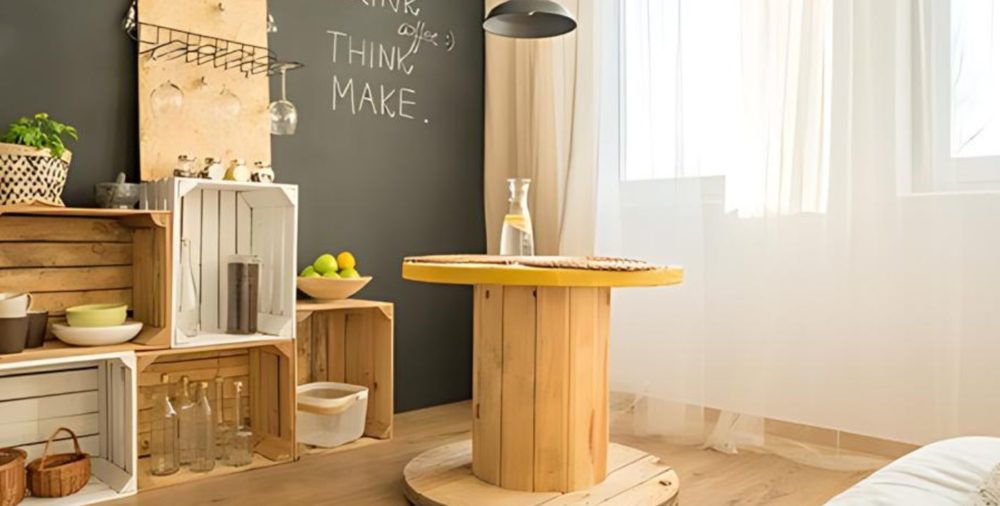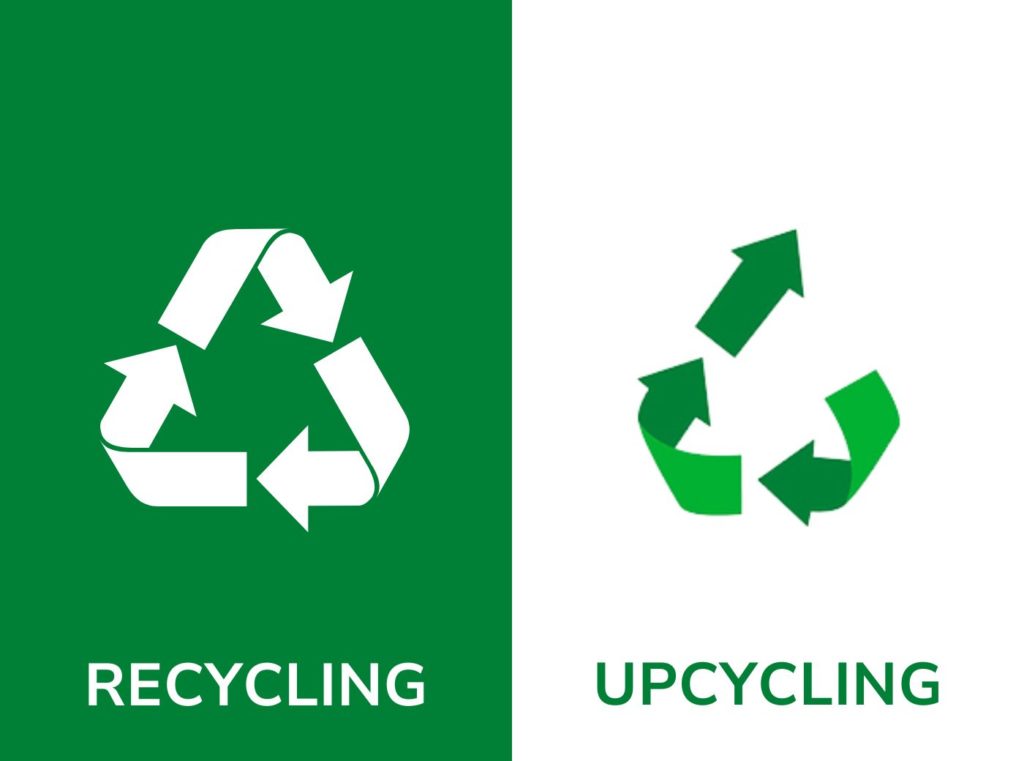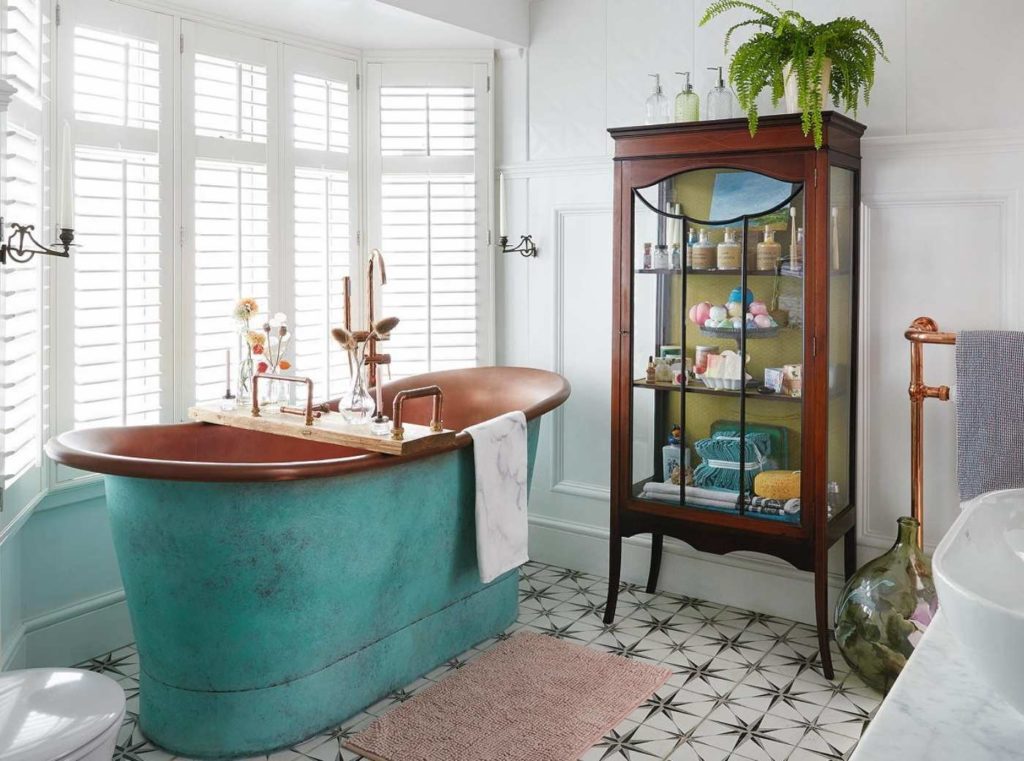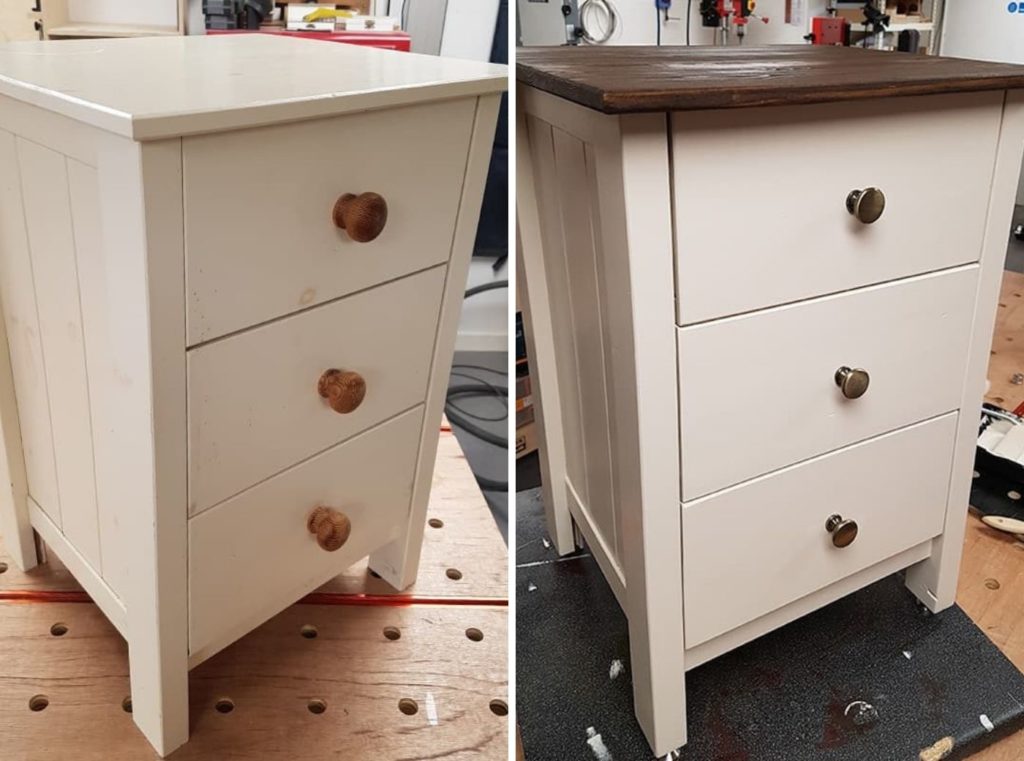Table of Contents
Introduction
Have you ever glanced at that old chair collecting dust in your attic and thought, “Could this become something beautiful?” Upcycling in interior design is all about transforming such overlooked items into unique, stylish pieces that breathe new life into your home. Not only does upcycling allow you to express your creativity, but it also promotes sustainability—a win-win for you and the planet.
According to the Environmental Protection Agency, millions of tons of furniture and furnishings are discarded each year. By embracing upcycling, we can significantly reduce this waste and make a positive environmental impact while crafting a home that reflects our individuality.
1. What Is Upcycling and How Does It Differ from Recycling?
Upcycling is the art of taking unwanted or discarded items and repurposing them into products of higher quality or value than the original. Unlike recycling, which breaks materials down to create something new (often consuming energy in the process), upcycling maintains the item’s original form but enhances it through creativity.
For example, turning an old wooden ladder into a stylish bookshelf is upcycling. You’re reimagining its purpose without breaking it down. Recycling that same ladder would involve processing the wood into pulp to make paper, requiring more energy and resources.
 2. Why Is Upcycling Gaining Popularity in Interior Design?
2. Why Is Upcycling Gaining Popularity in Interior Design?
2.1 Environmental Awareness
With growing concerns about climate change and sustainability, more people are seeking ways to reduce their environmental footprint. Upcycling reduces waste and the demand for new products, which in turn lowers resource extraction and pollution.
2.2 Economic Benefits
Upcycling is cost-effective. Instead of buying new, you can transform items you already own or find at thrift stores for a fraction of the price. According to a survey by HomeAdvisor, homeowners can save up to 50% on renovation costs by incorporating upcycled materials.
2.3 Personal Expression
In an age of mass production, upcycling offers a way to create one-of-a-kind pieces that reflect your personality. It’s an opportunity to design items tailored to your taste, making your home truly unique.
3. What Are the Benefits of Upcycling in Home Decor?
3.1 How Does Upcycling Impact the Environment?
Upcycling reduces the volume of waste in landfills. By giving a second life to items, we conserve raw materials and decrease pollution from manufacturing processes. The World Wildlife Fund emphasizes that reducing waste is crucial for preserving ecosystems and biodiversity.
3.2 Can Upcycling Save You Money?
Absolutely! Upcycling often involves minimal investment. Materials can be sourced inexpensively, and the creative process adds value without significant cost. This approach can be particularly beneficial during economic downturns when budgets are tight.
3.3 How Does Upcycling Create Unique and Personalized Spaces?
Upcycled items carry stories and character that new items often lack. By customizing pieces, you infuse your space with elements that are meaningful to you, resulting in a home that’s not just decorated but curated.
4. How Can You Get Started with Upcycling?
4.1 How to Identify Items to Upcycle?
Start by exploring your own home for items that are unused or outdated. Consider visiting local thrift shops, garage sales, or online marketplaces like Craigslist and Facebook Marketplace. Look for solid structures and materials that inspire you, even if their current form doesn’t.
4.2 What Essential Tools and Materials Do You Need?
Basic tools like screwdrivers, hammers, sandpaper, and paintbrushes are essential. Depending on your project, you might need a sewing machine, electric drill, or specialized paints. Safety gear like gloves and goggles should not be overlooked.
4.3 What Safety Tips Should You Follow for Upcycling Projects?
- Work in a Ventilated Area: Especially when using paints or adhesives.
- Wear Protective Gear: Gloves, masks, and safety glasses protect you from dust and fumes.
- Follow Tool Instructions: Use tools properly to prevent accidents.
5. What Are Some Upcycling Ideas for Different Rooms?
5.1 What Upcycling Projects Can You Do in the Living Room?
- How to Repurpose Coffee Tables?
Transform an old trunk into a vintage coffee table. Add casters for mobility and a glass top for a polished finish. This not only creates a focal point but also provides hidden storage. - How to Upcycle Shelving Units?
Use wooden crates stacked creatively to form shelves. Secure them together for stability and paint them to match your decor. This modular approach allows for customization to fit your space.
5.2 What Upcycling Inspirations Are There for the Bedroom?
- How to Create DIY Headboards from Old Doors?
An antique door can become a charming headboard. Sand it down, paint or stain it, and mount it securely. This adds height and interest to your bedroom without the cost of a new headboard. - How to Revamp Dressers?
Give a tired dresser new life with fresh paint and updated hardware. Consider using stencils or decoupage to add patterns or images that resonate with you.
5.3 What Upcycling Ideas Suit the Kitchen and Dining Area?
- How to Transform Cabinets?
Paint can work wonders on outdated cabinets. Remove doors for open shelving—a trend that’s both practical and stylish. Adding new handles or knobs can also refresh the look. - How to Repurpose Dining Chairs?
Mismatched chairs can be unified with paint or reupholstered seats. This eclectic mix adds character and can be a conversation starter at dinner parties.
5.4 What Upcycling Projects Work for the Bathroom?
- How to Convert Vintage Vanities?
Repurpose an old dresser into a vanity by fitting it with a sink and faucet. Seal the wood to protect against moisture. This creates a unique piece that stands out from standard bathroom fixtures. - How to Create Upcycled Storage Solutions?
Use mason jars mounted on reclaimed wood for toothbrush holders or storage for cotton balls and swabs. Old ladders can serve as towel racks, adding rustic charm.
 6. What Are Some Creative Upcycling Projects You Can Try?
6. What Are Some Creative Upcycling Projects You Can Try?
6.1 How to Craft DIY Upcycled Home Accessories?
- Turning Glass Jars into Decorative Vases:
Decorate jars with paint, ribbon, or etching. Use them as vases, candle holders, or storage containers. This simple project adds personal touches throughout your home. - Making Wall Art from Recycled Materials:
Create a collage using scraps of fabric, paper, or wood. Frame it to add an artistic element that’s entirely your own.
6.2 How to Repurpose Old Textiles?
Turn old sweaters into cozy pillow covers or patchwork blankets. Jeans can become durable tote bags. This not only recycles materials but also adds comfort and warmth to your decor.
6.3 How to Upcycle Everyday Items into Art?
- Bottle Cap Mosaics:
Collect bottle caps to create colorful mosaics for tabletops or wall art. - Wine Cork Boards:
Glue wine corks within a frame to make a functional and decorative bulletin board.
7. What Tips and Tricks Ensure Successful Upcycling?
7.1 How to Choose the Right Paints and Finishes?
- Material Matters: Use paints appropriate for the item’s material—metal, wood, or plastic.
- Eco-Friendly Options: Low-VOC and water-based paints are better for the environment and indoor air quality.
- Test First: Always test your paint or finish on a small area to see how it looks when dry.
7.2 What Techniques Are Best for Furniture Restoration?
- Preparation is Key: Clean and sand surfaces thoroughly.
- Use Primer: This helps the paint adhere better and provides a uniform base.
- Seal It: Protect your work with a clear sealant, especially for items that will see heavy use.
 7.3 How to Combine Functionality with Aesthetics?
7.3 How to Combine Functionality with Aesthetics?
- Think Practical: Ensure that the upcycled item serves its intended purpose effectively.
- Balance Form and Function: Don’t sacrifice usability for looks. A beautiful chair isn’t helpful if it’s uncomfortable.
8. What Upcycling Trends Should You Watch?
8.1 How Is Vintage Style Making a Comeback?
Vintage elements add nostalgia and charm. Incorporating items from past decades can create a timeless feel. Look for pieces with classic lines or intricate details that stand the test of time.
8.2 What Sustainable Materials Are Popular in Upcycling?
- Reclaimed Wood: Offers character and history, perfect for rustic or industrial styles.
- Bamboo: A fast-growing, renewable resource that’s strong and versatile.
- Recycled Metals: Adds an industrial edge and is durable for various applications.
8.3 How Is Technology Influencing Upcycling?
- Online Inspiration: Platforms like Pinterest and Instagram provide endless ideas.
- Virtual Workshops: Learn new skills through online tutorials and webinars.
- 3D Printing: Allows for creating custom components to enhance your projects.
9. How Can You Repurpose Common Household Items?
- How to Turn Glass Jars into Decorative Vases?
Paint the jars in ombre shades or wrap them with twine for a rustic look. They’re perfect for displaying fresh flowers or as lanterns with tealight candles. - How to Use Old Ladders as Shelving Units?
Lean a wooden ladder against the wall and use the rungs to hang blankets or towels. For a bookshelf, secure planks across the rungs. - How to Repurpose Dresser Mirrors?
Detach the mirror and frame it with reclaimed wood for a farmhouse aesthetic. Alternatively, turn the frame into a chalkboard for notes and reminders.
10. Where Can You Find Resources for Upcycling?
 10.1 What Online Communities and Forums Are Available?
10.1 What Online Communities and Forums Are Available?
- Pinterest: Search for upcycling ideas and save them to your boards.
- Reddit (r/Upcycling): Engage with others, share your projects, and get feedback.
- Facebook Groups: Join local or global upcycling groups for inspiration and support.
10.2 Are There Workshops and Classes You Can Attend?
- Local Craft Stores: Many offer classes on painting, sewing, and DIY projects.
- Community Centers: Check for workshops on woodworking or metalworking.
- Online Platforms: Websites like Skillshare and Udemy offer courses you can take at your own pace.
10.3 What Tools and Suppliers Are Recommended?
- Thrift Stores and Flea Markets: Find unique items to upcycle.
- Hardware Stores: For tools, paints, and hardware.
- Specialty Suppliers: For eco-friendly materials or unique hardware, check out specialized online retailers.
 Conclusion
Conclusion
Upcycling in interior design isn’t just a fad—it’s a movement toward sustainable living and personal expression. Platforms like Foyr make it easier to visualize these transformations, helping you turn old or discarded items into something new and beautiful. By reducing waste and adding personal touches, you create a home filled with pieces that tell a story. So, why not give it a try? Your next DIY masterpiece could be just an old piece of furniture away.
FAQs
‘Repurposed’ means taking an item and using it for a different function than originally intended, often enhancing its value and utility in the process.
Not at all! Many upcycling projects are beginner-friendly. There are plenty of tutorials and resources available to help you get started.
Look around your home, visit thrift stores, garage sales, or browse online marketplaces like eBay and Facebook Marketplace.
Upcycling reduces waste, lowers the demand for new products, and minimizes environmental impact by extending the life of existing items.










 2. Why Is Upcycling Gaining Popularity in Interior Design?
2. Why Is Upcycling Gaining Popularity in Interior Design? 6. What Are Some Creative Upcycling Projects You Can Try?
6. What Are Some Creative Upcycling Projects You Can Try? 7.3 How to Combine Functionality with Aesthetics?
7.3 How to Combine Functionality with Aesthetics? 10.1 What Online Communities and Forums Are Available?
10.1 What Online Communities and Forums Are Available?